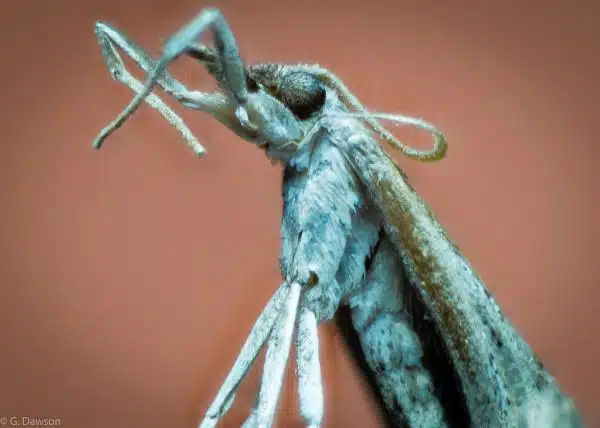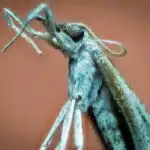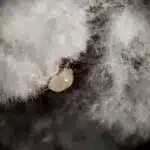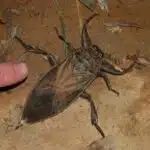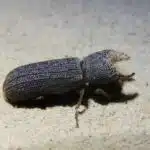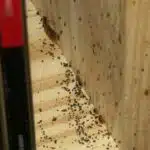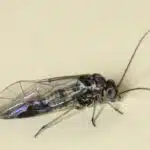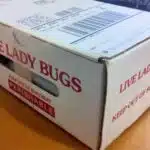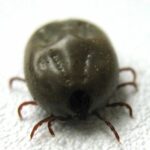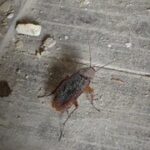Pantry pests, also known as stored product pests, are a common problem in households. These pesky insects infest and contaminate food items stored in pantries, cupboards, and cabinets. They can cause significant damage to your food supply, leading to financial losses and health risks.
As a pest control expert, I have witnessed how pantry pests can make their way into homes and cause chaos. From flour beetles to Indian meal moths, these tiny creatures multiply quickly and can be challenging to eliminate once they have established themselves in your pantry. In this article, we will explore effective strategies for getting rid of pantry pests in your home to keep your food safe from contamination.
Identifying Common Pantry Pests
Pantry pest identification is crucial when it comes to preventing a full-blown infestation. These pesky insects are commonly found in stored food items such as grains, cereals, and pet food. Some of the most common pantry pests include Indian meal moths, saw-toothed grain beetles, and flour beetles.
Indian meal moths are easily identifiable by their wings. They have a unique bronze color on their wings with copper-colored bands. Saw-toothed grain beetles are small and flat, measuring about 1/8 inch long, and are reddish-brown in color. Flour beetles are also small but have a shiny black or reddish-brown body.
Avoiding common pantry pests is important for maintaining the integrity of your stored foods. Some tips for avoiding these pests include regularly inspecting your food storage areas for signs of infestations, keeping dry goods in sealed containers, and rotating your stored foods to ensure that older items are used up first before they expire. By following these simple tips, you can prevent an infestation before it becomes a major problem.
Understanding the risks of a pantry pest infestation is essential when it comes to protecting your home from damage caused by these unwanted guests. In addition to contaminating food sources, some pantry pests can cause structural damage to homes by chewing through wood and other materials. To learn more about how to avoid and eliminate pantry pests from your home, continue reading our guide below.
Understanding The Risks Of A Pantry Pest Infestation
According to a study, 87% of American households have experienced a problem with pests in their pantry. This statistic is alarming as pantry pests can cause significant damage to stored food items and pose health risks to humans. Understanding the importance of prevention is crucial in avoiding an infestation.
Signs of a pantry pest infestation may include small holes or chew marks on food packaging, tiny black or brown insects crawling on shelves or walls, cobwebs near stored food, and an unpleasant odor emanating from the pantry. If you notice any of these signs, it is essential to take immediate action to prevent the infestation from spreading.
To prevent pantry pests from infiltrating your home and causing havoc in your pantry, follow these four steps:
- Store dry goods in airtight containers made of plastic or glass.
- Keep your pantry clean and organized by regularly wiping down shelves and throwing away expired food.
- Check food packaging for signs of damage before purchasing and bringing them home.
- Place pheromone traps in your pantry to detect the presence of any pests early on.
As a pest control expert, I cannot overemphasize the importance of being vigilant about preventing a pantry pest infestation. By following these simple steps and understanding the risks associated with pest infestations, you can protect your family’s health and keep your pantry free from unwelcome visitors. In the next section, we will discuss how keeping your pantry clean and organized can help prevent future infestations.
Keeping Your Pantry Clean And Organized
Organizing Techniques:
One of the best ways to keep pantry pests at bay is to organize your pantry. When food items are left scattered and disorganized, it becomes easy for pests to find their way into the pantry. Therefore, it’s important to ensure that all your food items are stored properly in airtight containers. This will help prevent pests from getting inside and destroying your food.
Another organizing technique is to group similar food items together. For instance, keep all your grains in one section of the pantry, canned goods in another section, and so on. This way, you can easily locate what you need without having to search through everything in the pantry. Additionally, make sure that any open packages of food are sealed tightly before being put away.
Cleaning Tips:
Keeping a clean pantry is essential for keeping pests at bay. Regularly cleaning and wiping down shelves with soap and water will remove any crumbs or spills that could attract pests. Additionally, sweep or vacuum any debris on the floor of your pantry.
It’s also important to regularly check expiration dates on food items and discard anything that has gone bad or expired. Stale or expired food can attract pests and create an infestation.
Transition:
By following these organizing techniques and cleaning tips, you’ll be able to maintain a pest-free pantry. However, if you do find yourself dealing with an infestation, removing infested food items is crucial for getting rid of the problem entirely.
Removing Infested Food Items
As the saying goes, prevention is better than cure. Keeping your pantry clean and organized is the first step in preventing pest infestations. However, even with vigilant cleaning, pantry pests can still find their way into your food storage areas. Identifying infested items and properly disposing of them is crucial to getting rid of pantry pests in your home.
To identify infested items, start by inspecting all food packages in your pantry. Look for signs of damage or holes in the packaging, as well as small brown or black bugs crawling around inside the package. Common pantry pests include weevils, moths, and beetles. If you spot any of these pests or signs of their presence, immediately remove the affected items from your pantry.
Proper disposal methods are essential when it comes to eliminating infested food items from your home. Do not simply throw away infested items in your regular trash bin as this can lead to further infestations. Instead, place them in a sealed plastic bag before throwing them out or freezing them for at least 48 hours to kill any remaining pests. By following these simple steps, you can effectively remove infested items from your home and prevent future pest problems.
One way to ensure that pantry pests do not return is by using airtight containers for storage. These containers create an impenetrable barrier that prevents pests from accessing stored food items. Additionally, they keep food fresher for longer periods while protecting against moisture and air exposure that causes spoilage. Investing in high-quality airtight containers is an effective long-term solution to keeping your pantry free from pesky invaders while ensuring that your stored food stays fresh and safe to eat.
Using Airtight Containers For Storage
Airtight containers are one of the most effective ways to prevent pantry pests from infiltrating your food supplies. These containers offer a sealed environment that prevents any insects or pests from accessing the contents inside. This means that you can store grains, cereals, and other dry goods without worrying about them becoming infested with bugs.
The benefits of using airtight containers are numerous. One of the most significant advantages is that they keep your food fresher for longer. Without proper storage, many foods can become stale or spoiled over time. Airtight containers help preserve their quality and taste by preventing air, moisture, and other contaminants from seeping in.
Choosing the right container size is also essential when it comes to preventing pantry pests. Smaller containers are ideal for storing small quantities of food items like spices, nuts or seeds while larger ones are suitable for storing bulkier items such as flours and grains. It is important to note that you should never overfill your containers as this will reduce their effectiveness in creating an airtight seal.
In order to ensure that your airtight containers remain pest-free, it’s important to regularly vacuum and wipe down your pantry shelves. This helps remove any crumbs or debris that may attract insects and other pests. By keeping your pantry clean and organized, you’ll be able to maintain a pest-free environment that keeps your food fresh and safe for consumption.
Vacuuming And Wiping Down Pantry Shelves
Vacuuming is an effective way to remove crumbs, food residue, and other debris from pantry shelves. Wiping down shelves with a cleaning rag and a disinfectant can also help reduce the presence of insects and other pests. Shelves, cabinets, and other storage containers should be inspected for spills and other food residue that can attract bugs. Dust should also be removed from shelves, cabinets, and containers to prevent spiders from nesting. All food residue and spills should be cleaned up to get rid of any potential food sources for pests. Finally, debris should be vacuumed and wiped from the pantry shelves to eliminate any potential hiding places for pests.
Vacuuming
When it comes to getting rid of pantry pests, vacuuming can be a highly effective method. Not only does it help to remove any existing pests from your pantry shelves, but it can also prevent future infestations by eliminating any potential food sources. By regularly vacuuming your pantry, you can significantly reduce the risk of pests such as weevils, moths, and ants invading your kitchen.
To maximize the benefits of vacuuming in your battle against pantry pests, it’s important to choose the right vacuum cleaner. Look for models with strong suction power and a variety of attachments that can reach into tight spaces and corners. A handheld or cordless vacuum may also be useful for quick cleanups between deeper cleanings. In addition, consider using a vacuum with HEPA filtration to ensure that any captured pests or debris are safely contained.
Overall, incorporating regular vacuuming into your pest control routine can help keep your pantry free of unwanted visitors. By investing in a high-quality vacuum cleaner and making sure to clean all surfaces thoroughly, you can enjoy a pest-free home and peace of mind knowing that your food is safe from contamination. So don’t wait until you spot signs of an infestation – start implementing regular pantry cleaning today!
Wiping
Another effective method to eliminate pantry pests and prevent future infestations is wiping down your pantry shelves. This step is crucial in removing any food debris or spills that may attract pests. It is recommended to wipe down all surfaces with a cleaning solution or a mixture of vinegar and water. Cleaning tips include using a microfiber cloth or sponge, focusing on corners, and paying extra attention to areas where spills are likely to occur.
Preventive measures can also be taken while wiping down the pantry shelves. Firstly, make sure that all food items are properly sealed in airtight containers or zip-lock bags to avoid spillage. Secondly, check the expiration dates of your stored food regularly and dispose of any expired items. Lastly, inspect any incoming groceries for signs of infestation before storing them in the pantry.
Incorporating wiping down into your pest control routine can help maintain a clean and pest-free pantry. By following these cleaning tips and preventive measures, you can ensure that your food remains safe from contamination and extend its shelf life. Take action now and start wiping down your pantry shelves regularly to keep it free from pesky insects!
Shelves
Shelf organization is an important factor in maintaining a clean and pest-free pantry. Proper shelf organization can prevent spills, which can attract pests such as ants, cockroaches, and rodents. It is recommended to use shelf liners or mats to protect your shelves from spills and food debris. Shelf liners can also make cleaning easier as they can be easily removed and washed.
When vacuuming or wiping down pantry shelves, it is essential to remove all items from the shelf before starting the process. This allows for a thorough cleaning of the entire surface area. It is also advisable to vacuum or wipe down the walls of the pantry to ensure that no hidden areas are left uncleaned.
After cleaning your pantry shelves, consider reorganizing them by grouping similar items together. This not only makes it easier to find what you need but also helps in identifying any expired or spoiled items that may have been overlooked. By taking these steps, you can maintain a well-organized and pest-free pantry, ensuring that your stored food remains safe for consumption.
Using Natural Repellents
According to a recent survey, pantry pests are a common problem in many households across the country. Fortunately, there are several natural repellents that you can use to get rid of these pests without resorting to harmful chemicals. DIY repellent recipes are easy to make and can be highly effective in deterring pantry pests from entering your home.
One popular natural repellent is peppermint oil. This essential oil has a strong scent that repels insects, making it an excellent choice for controlling pantry pests. Simply mix a few drops of peppermint oil with water and spray the mixture around your pantry shelves. You can also soak cotton balls in the mixture and place them strategically around your kitchen to keep pests at bay.
Another effective natural repellent is cedarwood oil. Like peppermint oil, cedarwood oil has a strong scent that deters insects from entering your home. To use this repellent, simply add a few drops of cedarwood oil to water and spray it around your pantry shelves. Alternatively, you can place cedar blocks or chips in your pantry to keep pests away.
While natural repellents can be highly effective in controlling pantry pests, it’s important to note that their effectiveness may vary depending on the severity of the infestation and the type of pest involved. If you have tried natural repellents without success, you may need to consider more aggressive measures such as freezing infested items or seeking professional help from a pest control expert.
Freezing Infested Items
Freezing infested items is one effective way to get rid of pantry pests in your home. This method is especially useful for those who want to save their food items from being wasted. The benefits of freezing food are numerous, including the fact that it can kill off any eggs or larvae that might be present in the food.
To properly freeze infested items, you should follow a few basic techniques. First, you need to make sure that the temperature in your freezer is set to zero degrees Fahrenheit or lower. This will ensure that any pests inside the food will be killed off quickly. You should also wrap the infested item tightly in plastic wrap or aluminum foil before placing it in the freezer. This will help prevent any moisture from getting into the packaging and potentially causing mold growth.
In addition to killing off pantry pests, freezing has other benefits as well. For example, it can help preserve food for longer periods of time, which is great for those who like to stock up on groceries and save money by buying in bulk. Freezing also helps maintain the nutritional value of foods over time, which means that frozen fruits and vegetables can be just as healthy as fresh ones. Proper freezing techniques are key to enjoying these benefits, so be sure to follow all recommended guidelines when using this method to get rid of pantry pests.
- Wrap infested items tightly before freezing
- Set freezer temperature at zero degrees Fahrenheit or lower
- Freezing preserves nutritional value and extends shelf life
With proper freezing techniques, you can effectively eliminate pantry pests from your home while also preserving your food items for future use. However, if you find that some pests persist even after freezing your infested items, there are other methods you can try such as utilizing pheromone traps. These traps work by attracting male insects with a scent they cannot resist and then trapping them inside a sticky substance where they eventually die. By combining different methods such as freezing and pheromone traps, you can effectively rid your home of pantry pests and enjoy a pest-free kitchen.
Utilizing Pheromone Traps
After utilizing freezing methods to eliminate pantry pests from your home, another effective technique is using traps. These traps work by emitting pheromones that attract the pests towards them, trapping them in a sticky substance that ensures they cannot escape. Pheromone traps come in different forms, depending on the type of pest you are dealing with. For instance, there are specific traps for moths, beetles, and weevils.
When using traps for pest control, placement and maintenance are crucial factors to consider. Place the trap near where you have seen the most activity or where you store your food items. It’s also important to ensure that the trap is not in direct contact with any food products. Furthermore, check the trap regularly and replace it as soon as it becomes full or ineffective.
In addition to using pheromone traps, pest control sprays can also be an effective solution for getting rid of pantry pests. However, it’s important to use these sprays as a last resort since they can be toxic if not used correctly. When applying insecticides, always follow the instructions on the label and wear protective gear such as gloves and a mask to avoid inhalation of harmful chemicals.
Applying Insecticides As A Last Resort
- When considering the use of an insecticide, it is important to research the specific insect in question and select an appropriate product that is labeled for that insect.
- When applying insecticides, the directions provided on the product label should be followed precisely to ensure effective and safe use of the product.
- Protective clothing, such as long pants and long-sleeved shirts, should be worn when applying insecticides to avoid skin contact.
- Additionally, a respirator should be worn when applying insecticides in enclosed or poorly ventilated areas.
- Insecticides should be used only as a last resort, and other pest control methods, such as sanitation and exclusion, should be used when possible.
- After application, any remaining insecticides should be stored in a secure location, away from children and pets, to prevent accidental ingestion or contact.
Choosing An Insecticide
When it comes to pantry pests, applying insecticides should be the last resort. However, if the infestation has reached an uncontrollable level, choosing the right insecticide is crucial. The first thing to consider is the type of pest you are dealing with as different insects may require different treatments.
Before using any insecticide, it is important to take safety precautions. Always read and follow the manufacturer’s instructions carefully. Wear protective clothing such as gloves and a mask to avoid skin and respiratory irritation. It is also advisable to remove all food items from the pantry and cover any appliances or surfaces that may come into contact with the insecticide.
Choosing the right insecticide can be overwhelming, but it is important to select one that targets pantry pests specifically. Products containing pyrethroids or neonicotinoids are commonly used for eliminating these types of insects. It is best to consult with a pest control expert who can recommend the most effective and safe product for your situation. Remember that proper application of insecticides is essential for success in controlling pantry pests.
Applying Insecticide Correctly
When dealing with a pantry pest infestation, applying insecticides should only be considered as a last resort. However, if the situation calls for it, choosing the right insecticide is crucial to effectively eliminate the pests and prevent future infestations. It is important to take safety precautions before using any insecticide, including wearing protective gear such as gloves and a mask to avoid skin and respiratory irritation.
One of the most important factors in applying insecticides correctly is determining the proper dosage. Overuse can lead to toxic residues that can contaminate food items in the pantry. Underuse, on the other hand, will not effectively eliminate the pests. It is essential to read and follow the instructions provided by the manufacturer carefully. Consulting with a pest control expert is also advisable to ensure that you are using the correct product and applying it properly.
In addition to following proper dosage instructions, it is crucial to wear protective gear when handling insecticides. This includes gloves, long-sleeved clothing, pants, shoes and socks that cover your feet completely, and a mask or respirator if recommended by the manufacturer. Protective gear minimizes your exposure to harmful chemicals while handling insecticides. Proper application of insecticides combined with safety precautions will help ensure that your pantry remains pest-free without causing harm or damage.
Safety Precautions
When dealing with a pantry pest infestation, applying insecticides should only be considered as a last resort. However, if the situation calls for it, safety precautions must be taken before handling any insecticide. As a pest control expert, I highly advise wearing protective gear such as gloves and masks to avoid skin and respiratory irritation.
Pest control experts recommend using gloves when handling insecticides as they can cause skin irritation and may be harmful to the user’s health. Gloves protect your hands from direct contact with the chemical and should be worn during application and disposal of the product. It is also essential to wear long-sleeved clothing, pants, shoes or boots that cover your feet completely to avoid any accidental exposure to the product.
In addition to wearing gloves, using masks is also recommended by manufacturers when applying insecticides. Masks or respirators can help prevent inhalation of toxic fumes released by the product during application. As an expert in pest control management, I highly advise following these safety precautions when applying insecticides as this will ensure your safety while eliminating pantry pests effectively.
Seeking Professional Help For Severe Infestations
For severe pantry pest infestations, it may be best to hire a professional exterminator. These experts have the knowledge and experience to identify the type of pest and the extent of the infestation, which allows them to use the appropriate methods for removal. Additionally, they have access to stronger chemicals that are not available to consumers.
While DIY remedies can be effective for small infestations, larger or more severe infestations may require professional help. Attempting to handle a severe infestation on your own may only prolong the problem and cause further damage. Professionals can also offer advice on how to prevent future infestations, which can save you time, money, and frustration in the long run.
When hiring an exterminator, be sure to do your research before making a decision. Look for companies with good reviews and ratings from previous customers. It’s also important to ask about their methods and products used for pest control to ensure they align with your values and preferences.
Transition: While hiring a professional can effectively rid your home of pantry pests, it’s important to take steps towards preventing future infestations as well.
Preventing Future Infestations
If you’ve recently dealt with pantry pests in your home, you know how frustrating and unsettling it can be. But did you know that prevention is key when it comes to keeping these pesky insects out of your pantry? In fact, according to a recent survey by the National Pest Management Association, 60% of pest control professionals say that prevention is the most important aspect of their job.
To prevent reinfestation, it’s crucial to maintain good long-term pantry maintenance habits. This includes regularly cleaning and organizing your pantry, checking food expiration dates, and properly storing food items. It’s also important to seal any cracks or openings in your pantry to prevent pests from entering. By taking these steps, you can significantly reduce the risk of future infestations and keep your pantry pest-free.
One effective way to keep track of your long-term pantry maintenance is by creating a checklist or schedule. Here’s an example of what that might look like:
| Task | Frequency |
|---|---|
| Wipe down shelves | Monthly |
| Check food expiration dates | Weekly |
| Store food in containers | Always |
| Inspect for cracks or openings | Quarterly |
| Vacuum or sweep pantry floor | Biweekly |
By following this checklist (or creating one tailored specifically for your home), you can stay on top of your long-term pantry maintenance and greatly reduce the likelihood of another infestation. Remember, taking preventative measures now will save you time, money, and frustration in the long run!
Checking Food Expiration Dates
- Checking food expiration dates is an essential step for proper pantry pest control as expired food may attract pests.
- It is important to inspect food containers for signs of pantry pests such as holes, webbing, or fecal pellets.
- Discarding food that has gone past its expiration date is necessary to prevent pantry pests from reproducing in your home.
- To ensure the safety of food products in your home, it is best to check expiration dates and discard any food that is past its expiration date.
Checking Expiration Dates
It is crucial to check expiration dates when dealing with pantry pests in your home. The importance of this cannot be emphasized enough, as expired food items are a magnet for these pesky insects. As a pest control expert, I recommend that you inspect all food items for their expiration dates before keeping them in your pantry or kitchen cabinets.
Label reading is an essential skill that can help you identify any food item’s expiration date. It is imperative to read the label carefully and understand the meaning of different terms used on the package. For instance, “sell-by” refers to the date by which the store must sell the product, but it may still be safe to consume after that date. On the other hand, “use-by” indicates the last day on which it is safe to consume that product.
In conclusion, checking expiration dates is a simple yet effective way to get rid of pantry pests in your home. By regularly inspecting all food items for their expiry dates and disposing of those that have passed their use-by date, you will create an environment that’s less attractive to these unwanted guests. Don’t let these pests take over your kitchen; start label reading today!
Discarding Expired Food
As a pest control expert, checking food expiration dates is one of the most crucial steps in preventing pantry pests. However, it is just as important to discard any expired food items promptly. Keeping expired food in your pantry or kitchen cabinets can attract not only pests but also harmful bacteria that can cause illness.
To avoid wasting food and contributing to food waste, consider donation options for non-perishable items that are still within their use-by date. Many local food banks and shelters accept donations of non-expired food items to help those in need. For perishable items that have passed their use-by date, composting is an eco-friendly option that can reduce waste and provide nutrients for your garden.
In conclusion, checking expiration dates is just the first step in maintaining a pest-free home. Properly discarding expired food items is equally important to prevent attracting unwanted pests and harmful bacteria. Consider donating non-expired items and composting expired ones to prevent unnecessary waste while helping others and the environment.
Inspecting Food Before And After Purchase
When it comes to preventing pantry pests in your home, conducting pre-purchase inspections is crucial. Before buying any food item, make sure to carefully examine the packaging for signs of damage. Pests such as moths and beetles can easily infiltrate packages that have small holes or tears, so avoid purchasing items with these imperfections.
In addition to pre-purchase inspections, post-purchase inspections are equally important in identifying potential pest problems in your pantry. Take a few minutes to inspect all newly purchased food items before storing them in your pantry. Look for any signs of damage or infestation, such as webbing, larvae or adult insects. If you find any evidence of pests, discard the infested item immediately and thoroughly clean the area where it was stored.
By conducting both pre and post purchase inspections, you can greatly reduce the risk of a pantry pest infestation in your home. However, it is important to note that no inspection method is foolproof, which is why staying vigilant against pantry pests should be an ongoing effort. In the next section, we will discuss some additional steps you can take to prevent and control pantry pests in your home.
Staying Vigilant Against Pantry Pests
Staying vigilant against pantry pests is crucial to prevent infestations in your home. The importance of prevention cannot be overstated, as once these pests find their way into your pantry and kitchen, they can cause serious damage and spread diseases. Prevention starts with proper food storage and regular cleaning of the pantry area. It’s also essential to inspect all food items before storing them in the pantry.
One sign of infestation is the presence of small holes or tunnels in packaged foods. Pantry pests like Indian meal moths, flour beetles, and weevils feed on grains, cereal products, nuts, and dried fruits. Another telltale sign is finding live or dead insects near food packages or on shelves. If you notice any signs of infestation, it’s imperative to take action immediately to avoid further damage.
To stay vigilant against pantry pests, it’s recommended that you keep a watchful eye out for any signs of infestation regularly. Also, consider using traps or pheromone-based lures that attract specific types of pests. Regularly clean your pantry, vacuum up any spilled food particles or crumbs from shelves and floors around the area. With these measures in place, you can significantly reduce the likelihood of a pantry pest problem occurring in your home.
Conclusion
Pantry pests are a common problem in many homes, but with proper knowledge and preventative measures, they can be eliminated. Identifying common pantry pests such as moths, beetles, and weevils is the first step. Understanding the risks of an infestation helps to motivate action towards controlling the problem.
Keeping your pantry clean and organized is critical in preventing pests from taking hold. Removing infested food items and using airtight containers for storage helps to limit their spread. Checking food expiration dates and inspecting food before and after purchase are simple yet effective ways to stay vigilant against pantry pests.
As pest control experts advise, prevention is key when it comes to pantry pests. With diligence and attention to detail, these pesky invaders can be kept at bay. Remember, a well-organized pantry is like a fortress against unwanted visitors. Take action today and enjoy the peace of mind that comes from knowing your home is free from pantry pests.
Image Credits
- “Pantry Moth” by grantdaws (featured)

